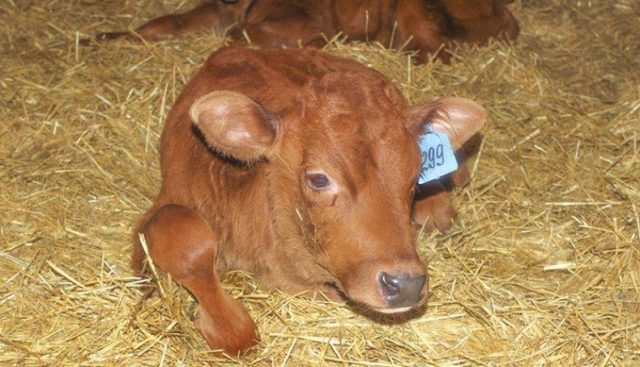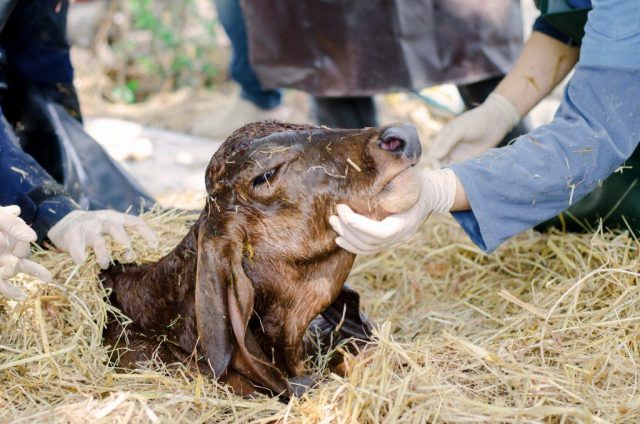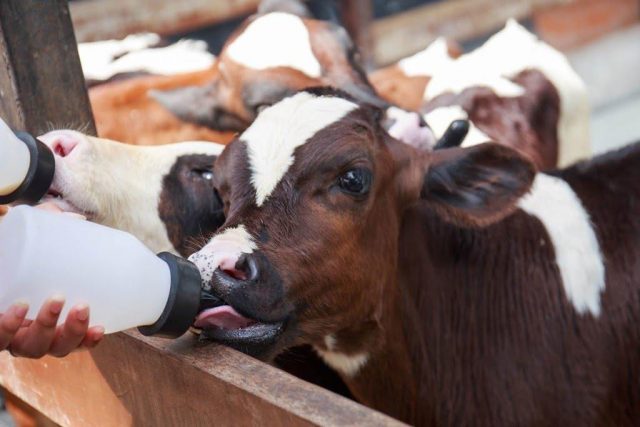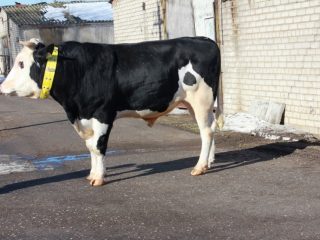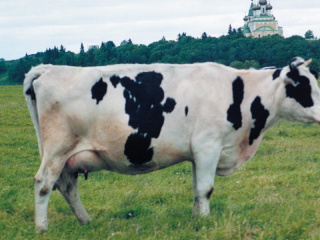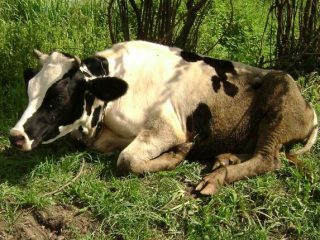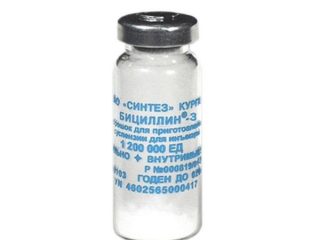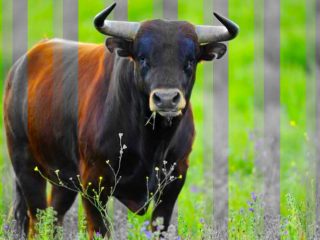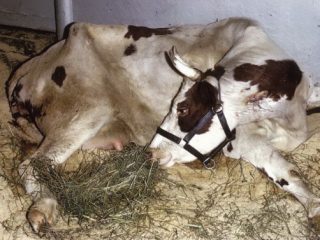Content
Gastroenteritis in calves and cows is a fairly common disease of the digestive system that occurs against the background of inflammatory processes occurring in the gastrointestinal tract of animals. The most dangerous consequence of this disease is the dehydration that occurs in calves and adults, which can lead to quite sad consequences.
Causes of gastroenteritis
Gastroenteritis can occur in young and adult cattle for several reasons:
- sanitary and epidemic (violation of sanitary standards and rules for keeping animals, lack of timely vaccination, etc.);
- genetic (low level of the immune system of young animals and adult animals);
- physiological (general weakness of animals caused by improper conditions of their keeping, lack of a constant temperature in the places where they are kept, their hypothermia or overheating, lack of walks in the fresh air at any time of the year);
- infectious (infection of livestock from various sources).
In calves, gastroenteritis most often occurs due to improperly organized nutrition, namely:
- feeding calves with low-quality, sour milk;
- too abrupt a transition from milk feeding to an adult type of feeding;
- Giving calves water that is too cold or dirty.
- in the use of low quality feed;Important! The main cause of gastroenteritis is improper feeding of cattle. This may manifest itself:
- non-compliance with diet and water;
- the use of frozen feed in feeding livestock, as well as rotten, sour, moldy or clogged with earth and sand feed.
Symptoms and course of the disease
Gastroenteritis is a disease that is always accompanied by very clear symptoms.
Important! The main sign of gastroenteritis is the presence of intense diarrhea in the animal.
Depending on the nature of the inflammation, there are several forms of this disease, each of which has its own characteristic symptoms:
Form of gastroenteritis | Characterizing symptom |
Necrotic | Watery stool with distinct pieces of soft tissue. |
Purulent | The stool contains dead tissue and interspersed with yellow-gray lumps. |
Ulcerative-erosive | Watery stool with blood clots. |
Fibrinous | Feces contain films of fibrin. |
According to the nature of its course, gastroenteritis has 2 main forms, each of which also has its own symptoms.
The acute form is characterized by:
- weakened behavior of the calf and adult: the animal can lie in the same position for a long time or move chaotically;
- decreased appetite or complete loss of interest in food;
- a sharp increase in the animal’s body temperature;
- diarrhea, colic and bloating;
- disruption of the cardiovascular system, rapid breathing;
- gnashing of teeth and groaning.
The presence of these signs indicates the need to provide prompt assistance to the animal, since the lack of medical intervention can lead to a decrease in temperature, thickening of the blood and death of the cattle.
The course of the chronic form is characterized by all the same signs as the acute form, but they express themselves much more mildly. This manifests itself in jumps and constant changes in the improvement and deterioration of the animal’s condition, which makes the individual very exhausted.
Diagnostics
To correctly diagnose gastroenteritis, a whole range of studies and measures are carried out, namely:
- Laboratory examination of the blood of a sick individual. The blood of a calf or an adult animal is taken for analysis in order to establish the quantitative characteristics of leukocytes, erythrocytes, hemoglobin, etc. The analysis is also carried out to exclude the possibility of intestinal infections influencing the course of the disease;
- The animal’s body temperature is constantly monitored, from which, in this disease, we can talk about the course of its course and the dynamics of development;
- A thorough analysis of the feed ration of calves and cows and their living conditions is carried out. In the case of illness in a young calf that is breastfed, the regimen, completeness and quality of its mother’s diet are analyzed;
- They study the epizootic situation - the prevalence of the development of infectious diseases in the area of residence of the sick individual.
Treatment methods for gastroenteritis in calves
Treatment of gastroenteritis in calves and cows takes place in several main stages:
- Isolate the sick animal from the herd, stop all feeding and call a professional veterinarian. Isolation is carried out in order to exclude the possibility of infection of other animals from a sick individual.
- Lavage of the calf's stomach to eliminate further intoxication with toxic substances. Rinsing is most often done with sodium bicarbonate solution or isotonic solution. Laxatives may be prescribed to empty the bowels.Important! It should be remembered that on the first day, after gastroenteritis is diagnosed in a calf or cow, they are prescribed a complete absence of any type of feeding. Only clean drinking water in unlimited quantities is allowed. In some cases, to eliminate the possibility of exhaustion of a sick animal, glucose, sodium chloride or ascorbic acid may be added to the water.
- Prescribing antibiotics and antimicrobials. In addition, the veterinarian must prescribe vitamins A, B, C, and E to the animal. Pain and spasms in the animal’s gastrointestinal tract are eliminated by using various analgesics, No-shpa or Anestezin. To restore normal intestinal microflora, the animal is prescribed probiotics.
- After the critical point of the disease has been passed and the individual’s condition has improved positively, a separate diet is prescribed for the calf. A mucous rice decoction, a decoction of oatmeal, and infusions of medicinal herbs, such as chamomile, have a beneficial effect on the body of a sick animal.
Forecast
When identifying the first signs of gastroenteritis in a calf or cow and promptly seeking veterinary help, a positive outcome of the disease will depend on the correct diagnosis and qualified treatment. If these conditions are met, the prognosis for the complete restoration of normal life activity of cattle is:
- for acute gastroenteritis – about 10 days;
- in the chronic form – about 30 days.
Preventive actions
Gastroenteritis belongs to the category of diseases that are very quickly transmitted from individual to individual. This means that one sick calf can easily infect the entire herd. In order to prevent such a development of events, all preventive measures should be carefully carried out to counter the appearance of this disease in the livestock population and the following aspects of the life of calves and cows should be carefully monitored:
- Mode and quality of food received. For calves, it is especially important to monitor compliance with the “soft”, gradual transition from the milk type of nutrition to the adult type of nutrition;
- Feed intended for consumption by calves and adults must be additionally enriched with vitamins and minerals;
- Young animals should not be grazed on frozen ground;
- Sanitary living conditions for cattle. All bedding, stalls and feeders must be cleaned periodically, the water in the sippy cups must be kept clean and, preferably, at room temperature;
- The ambient temperature in the area where calves and cows are kept should be uniform.
Conclusion
Gastroenteritis in calves and cows is a disease of the gastrointestinal tract, which is characterized by pronounced symptoms and transience. The main danger of this disease for cattle is dehydration of the body of sick individuals. If medical care is not provided to a sick animal in a timely manner, the consequences of the disease can have a sad outcome. However, with timely diagnosis and proper therapy, gastroenteritis can be successfully treated, and the animal quickly returns to normal living conditions.
